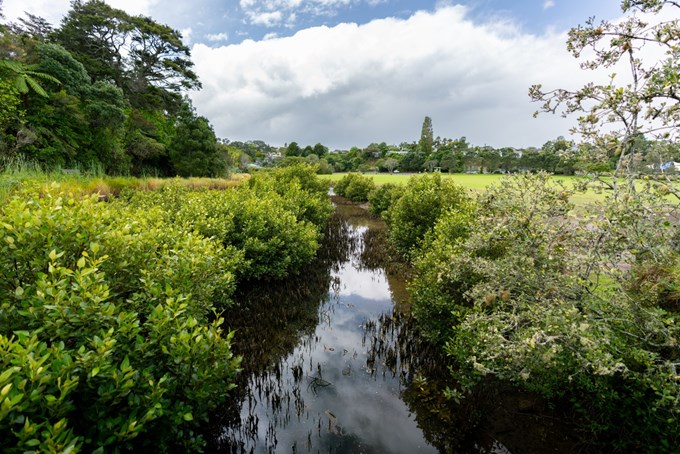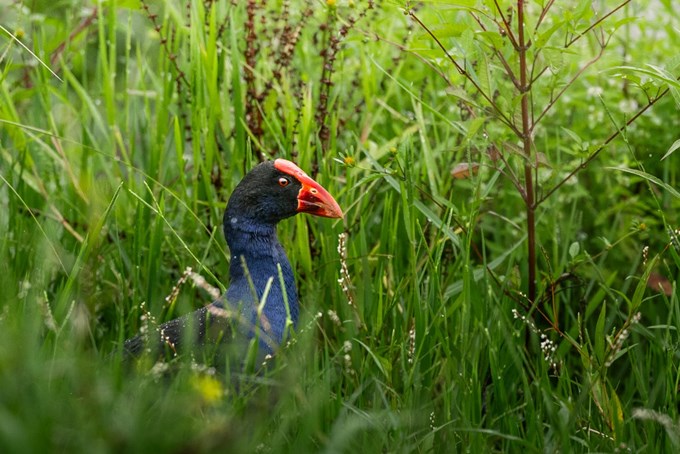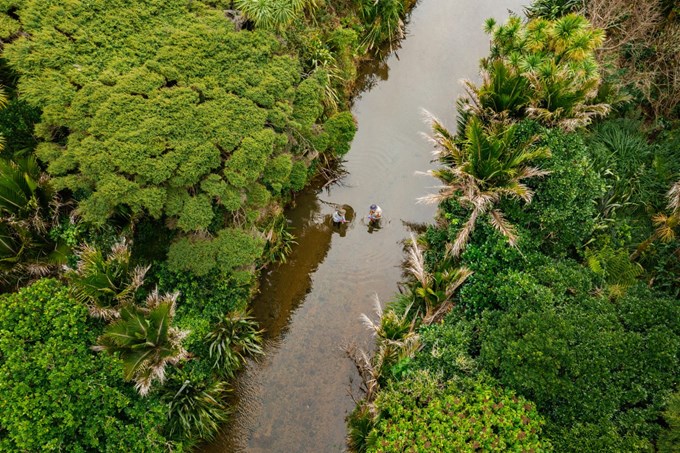Drive along any Auckland motorway and eventually you’ll see tidal areas with shelly banks and pūkeko. With all that mangrove and mud action, you could be forgiven for thinking that the wetlands of Tāmaki Makaurau are in fine form, but more than 97 per cent of the region’s native wetland areas have been destroyed through drainage and land development.
Fortunately, Auckland Council staff and passionate volunteers are carrying out important mahi to protect and restore these vital ecosystems.
What is a wetland?
Reporepo, poharu and roto (all names for wetlands in te reo Māori) are areas of land on the margins of streams and lakes, in estuaries or damp places where water collects. wetlands occur in areas with poor drainage or where water accumulates. In Auckland wetlands are found on the margins of streams and lakes, in estuaries or damp places where water collects.
Wetlands have always been important to Māori – as well as being mahinga kai (food-gathering sites), they’ve also provided plants for rongoā Māori (Māori medicine), and an important source of materials. For example, the dry leaves of raupō were used by Māori to thatch roofs and walls of whare and storehouses.
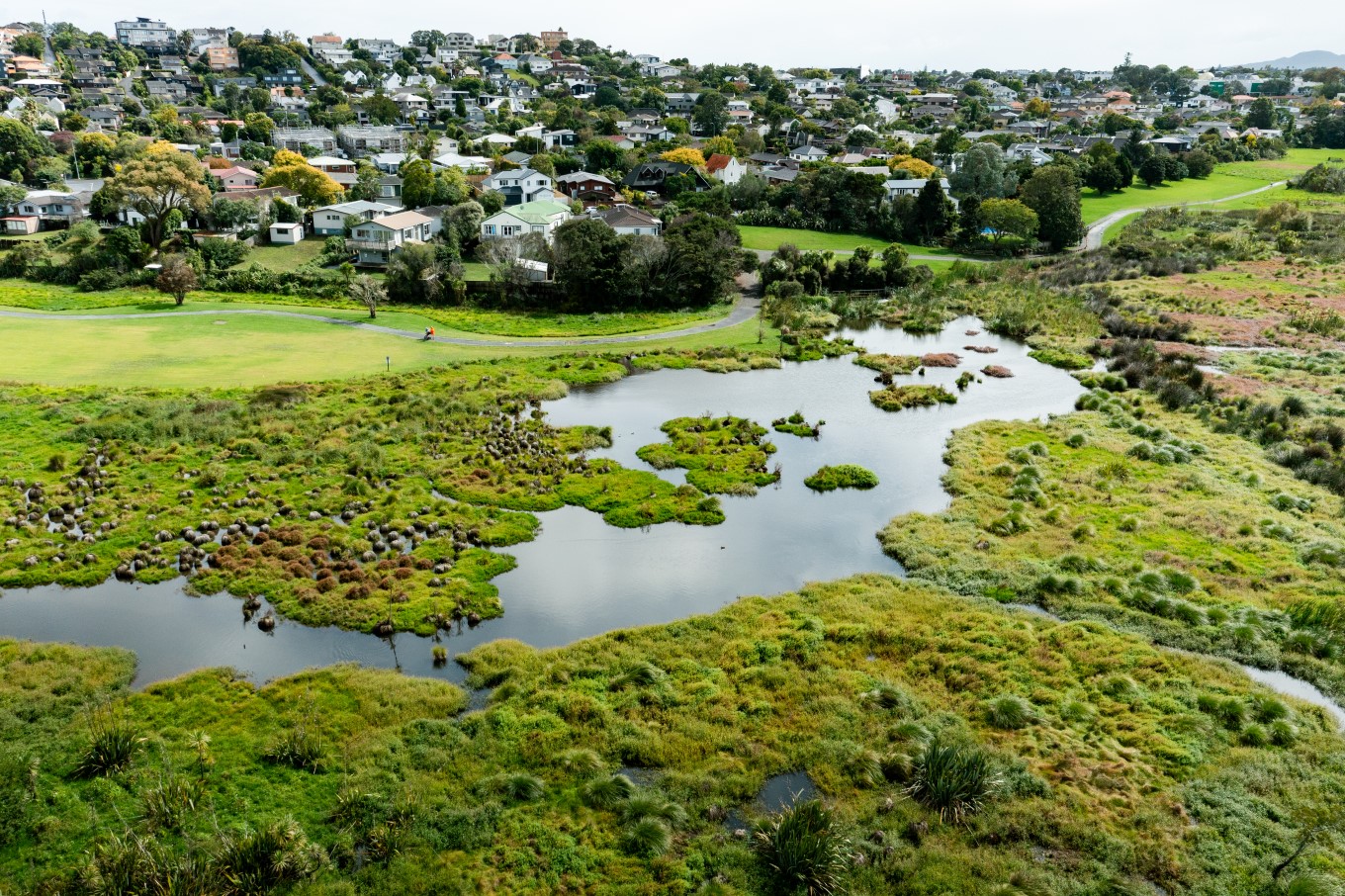
Waiatarua Reserve in Remuera is Auckland's biggest wetland restoration project. The constructed wetland helps filter stormwater.
Biodiversity hotspots
Wetlands are home to a large variety of insects, fish and birds, and generally contain more species than you’ll find within a forest environment. A wetland is the one of the only places where you’ll find matuku-hūrepo (Australasian bittern) – good luck though, as these days they’re rarely seen as there are less than 1000 left.
Our wetlands are also home to eight of our 27 native fish species, including īnanga (whitebait), tuna (eels) and the endangered black mudfish.
Auckland Council’s Biodiversity Strategy directs staff to improve the health of native wetland species. The most effective way of achieving this is to restore wetland habitat and to reduce predator numbers.
“Council staff are, for example, heavily involved in restoring native fish, plant and wetland bird populations throughout the region” says Auckland Council senior freshwater ecologist Matthew Bloxham.
This includes monitoring the range of species in wetland areas by taking eDNA (environmental DNA) samples from outstanding wetlands such as Pararaha Valley and Whatipū wetland in Waitākere Ranges Regional Park.
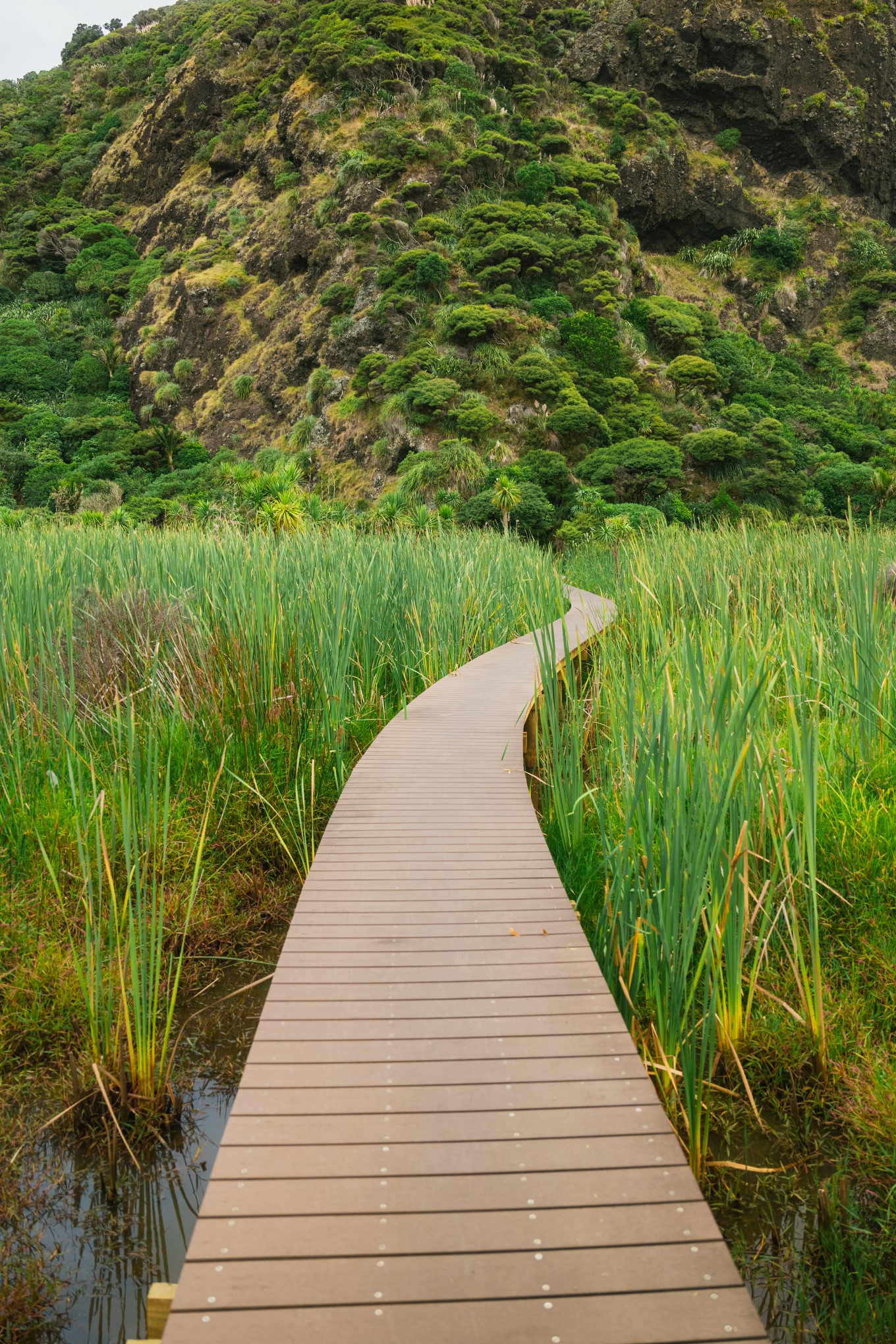
A new boardwalk in Pararaha Wetland allows people to traverse the wetland, including this raupō swamp, without going off the tracks.
Giant, helpful sponges
Wetlands are also considered to be giant sponges because of their ability to act as filters. Freshwater scientist Rose Gregersen says they play an integral role in the stormwater system.
“Wetlands slow water down that’s coming in from the wider catchment and help to filter out contaminants from the land before the water reaches other environments like lakes or coastal ecosystems.”
Due to their filtering abilities, including their ability to channel floodwaters, Auckland Council has even reconstructed wetlands. One of these is Waiatarua Reserve in Remuera, which is Aotearoa’s biggest urban wetland restoration project. It was originally a swamp, but various unsuccessful attempts were made in the 1880s to drain the lake.
In 1987, restoration plantings began for stormwater management and to create habitat for birds. Today the reserve is home to tētē moroiti (grey teal), poaka (pied stilt) and matuku moana (white-faced heron).
Become a wetland warrior
If you’re keen to be part of protecting these precious taonga, there are community groups around Auckland where you can help restore large and small wetlands. Attend a planting day in winter, help with pest trapping or take part in a stream clean up. Check out Auckland Conservation Directory for a list of groups you can join or read up on Auckland wetlands you can visit here.
For starters, if you’re visiting a wetland, you can help to protect it by staying on boardwalks so you’re not disturbing any birdlife. If you own a dog, make sure you keep it on a lead when entering wetland areas.
Farmers who live adjacent to wetland areas can play their part by fencing wetland from stock to prevent trampling and browsing of vegetation, and by planting suitable native species that are sourced from the area.
“You can achieve great things in a very short time with wetlands,” says Matt.
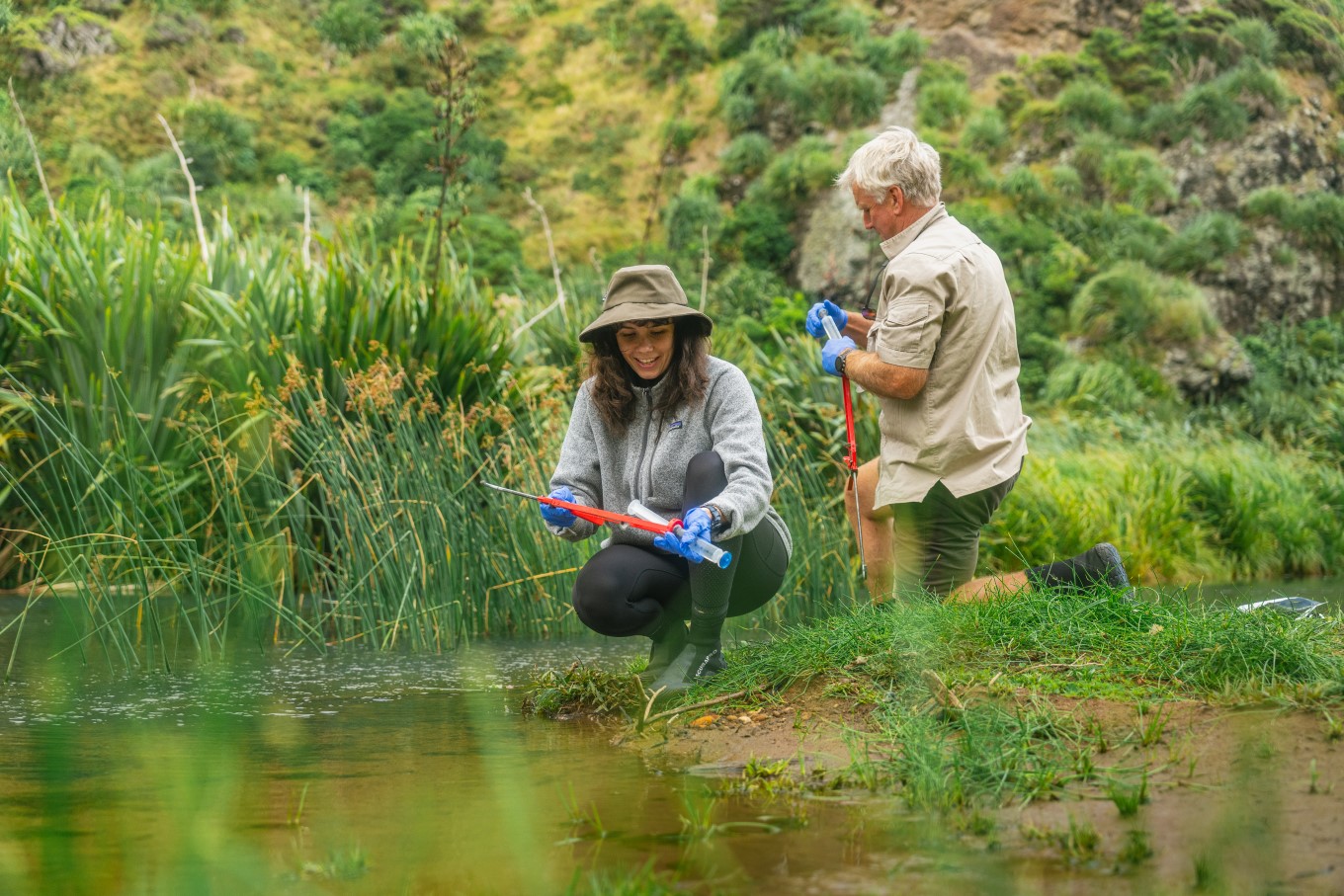
Auckland Council freshwater ecologists Rose Gregersen and Matthew Boxham have been taking eDNA (environmental DNA) freshwater samples at Pararaha Valley, near Karekare, which is classed as one of the region's most outstanding wetlands.

